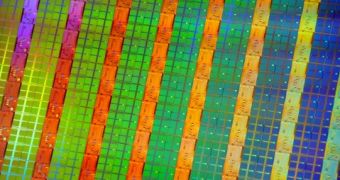Most of the electronic devices produced today in the world use a kind of computer chip or microprocessor in their components. The scientists are asking themselves how further we can push back the miniaturization process, to create smaller, cheaper and faster chips. European researchers say there is plenty of scope to push back even more the limits of miniaturization.
The CMOS (complementary metal-oxide semiconductor) technology was the first step, to create ever smaller transistors and computer chips based on a lithographic design process, based on 10-micrometer or more transistors. Most of the chips created today feature 65 nanometer technologies or 90 nm, to produce transistors more than a hundred times smaller than the original design. Even with such small transistors, for the semiconductor technology they are not small enough.
The strong competition between the companies is directly linked to the minimum size of the transistors, meaning that more can be packed on a silicon chip and more transistors are transferred into more computing power to create sophisticated electronic systems.
STMicroelectronics based in Crolles, France is the biggest semiconductor supplier in Europe and the fifth biggest semiconductor manufacturer in the World. In the last years it coordinated two European-funded projects to push back the limits of miniaturization of semiconductors, in 2006 creating the 45 nm fabrication technology.
The company is now conducting a project, which is working on developing 32nm and even 22nm nodes. Although developing even smaller transistors is essentially good business, it could all be for nothing as 32nm scale is highly affected by quantum mechanical effects. Project Pullnano resolved a major problem, regarding the reduction of the current leakage at the logic gate, by using hafnium based insulators rather than the traditional approach of using silicon dioxide.
Though the technology of producing microchips is evolving at relatively high rates, there will be a point in which the minimization will no longer be feasible or practical. Scientists estimate that the mark would be around 16nm or 11nm.
The biggest beneficiary of the continuation of the minimization process will be the consumer. Over the last 25 year the price per transistor has fallen over 2.500 times.

 14 DAY TRIAL //
14 DAY TRIAL //